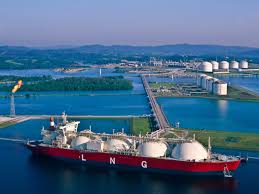The gas market will progressively become more interconnected and less regionalised due to the projected extension of total gas exports; GECF said and noted the Asian LNG market, with 71% of global LNG imports, will remain the largest regional market.
The share of traded LNG will increase to approximately 48% of all traded gas in 2030 and 56% in 2050, respectively, Gas Exporting Countries Forum (GECF) said in its Global Gas Outlook 2050’s fifth edition.
Liquefied natural gas (LNG) regasification from existing, under construction, potential, proposed, stalled and speculative projects is expected to be around 1,398mn tonnes per year (mtpy) including 896.1mtpy in Asia, and 201.5mtpy regasification projects in Europe.
It is projected that the Asian LNG market, with 71% of global LNG imports, will remain the largest regional market. Japan, China, South Korea and India will account for 70% of Asia’s regasification capacity. Consequently, these four countries will be the largest LNG markets in the world.
The 1,240 mtpy of liquefaction capacity projects will be higher than the expected LNG demand of around 820 mtpy and consequently, LNG markets remain well supplied throughout the forecast period.
It is projected that over the outlook period, 1,990bcm out of around 5,920bcm global natural gas demand will be imported, including 1,105bcm from GECF Member Countries. Thus, more than half of the global gas trade originates from the current GECF Members.
By assuming the same member composition of the GECF, it is estimated that the market share of the current GECF Member Countries will be around 56% by 2050.
With the Covid-19 pandemic and uncertainties surrounding future energy prices and demand, the slowdown of existing and impending investment projects is not surprising.
As a result, Foreign Direct Investment (FDI) inflows are expected to continue declining below the pre-pandemic level through 2022.
Total gas investment (including upstream and midstream activities) between 2020 and 2050 will reach a cumulative $10tn.
Most of this amount includes upstream activities; trade infrastructure (such as liquefaction plants, pipeline strings and regasification plants) will require an additional cumulative $708bn investment, with more than half going to liquefaction projects.
Most of this investment will be focused in Africa, non-OECD Asia, and Eurasia, GECF noted.

 Iran Energy News Oil, Gas, Petrochemical and Energy Field Specialized Channel
Iran Energy News Oil, Gas, Petrochemical and Energy Field Specialized Channel



